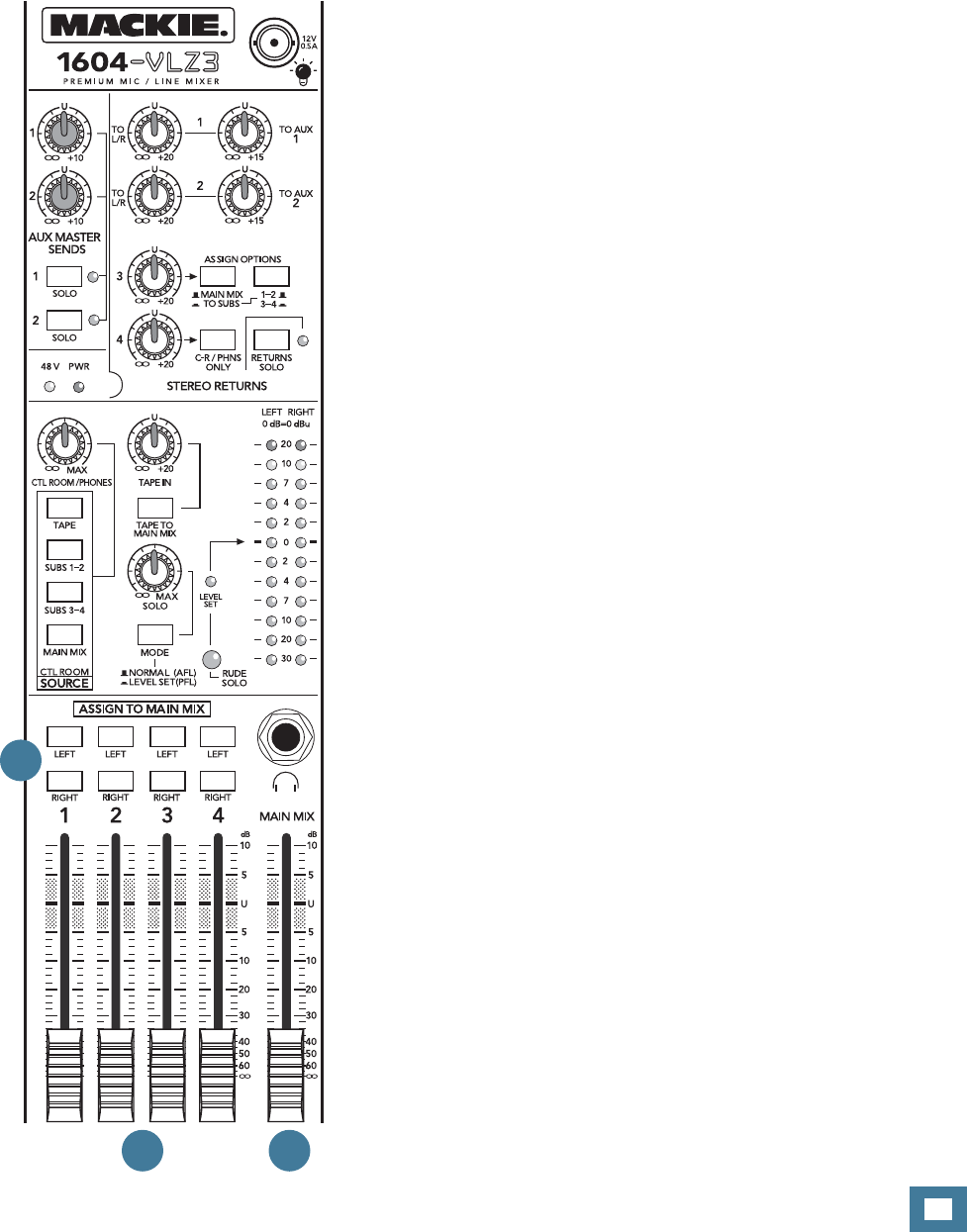
19
Owner’s Manual
Owner’s Manual
Output Section Description
You’ve just learned about the input channels and how
the signals get in and out. The signals come in via MIC
[1] and LINE [2] input jacks, are manipulated by the
channels, and then sent to the output (master) section.
Things get a little more complicated, so put on your
thinking caps, take a deep cleansing breath, take this
manual, get on a bycycle, ride down to the canal, ponder
your life and all its unique experiences, then read this
section.
3738
39
37. MAIN MIX FADER
This fader controls the levels of signals sent to the
MAIN OUT [14] jacks and TAPE OUTPUT [11] RCA
jacks. All channels and STEREO RETURNs that are as-
signed to the main mix, not muted and not turned fully
down will appear at the MAIN OUTs. Before the main
mix gets to this fader, the signals pass through the MAIN
INSERT [13].
The main mix signals are off with the fader fully down,
the “U” marking is unity gain, and fully up provides 10
dB additional gain. This additional gain will typically
never be needed, but once again, it’s nice to know it’s
there. The fader itself is a stereo version of the chan-
nel and subgroup faders — same supersmooth custom
taper, same dead silence when turned fully down. This is
the fader to pull down at the end of the song when you
want “The Great Fade-Out.”
38. SUBGROUP FADERS
As you might expect, these faders control the levels of
signals sent to the SUB OUTS [8]. All channels that are
assigned to subgroups with the ASSIGN [26] switches,
not muted and not turned fully down will appear at the
SUB OUTS. Unlike the MAIN OUT [14], the subgroup
signals do not pass through an insert jack on their way
to the subgroup faders. That’s no problem — should you
want to send these signals through a serial effects pro-
cessor, simply patch from the SUB OUTS to the effect’s
input, and from the effect’s output to whatever the fi nal
destination is, usually a multitrack recorder.
The subgroup signal is off when its fader is fully down,
the “U” marking is unity gain, and fully up provides 10
dB additional gain. Remember that if you’re treating
two subgroups as a stereo pair, subgroup 1 and 2 for
example, make sure that both subgroup faders “ride”
together, to maintain the left/right balance.
39. ASSIGN TO MAIN MIX
One popular use of the subgroups is to use them as
master faders for a group of channels on their way to
the main mix. Let’s say you’ve got a drum kit hogging up
seven channels and you’re going to want to fade them
out at a different rate than the other channels. You don’t
want to try that with seven hands or seven fi ngers, so
just un-assign these channels from L–R, reassign them
to subgroup 1–2, engage the ASSIGN TO MAIN MIX,
LEFT on subgroup 1 and the ASSIGN TO MAIN MIX,
RIGHT on subgroup 2. Now you can ride the entire
stereo drum mix with two faders — 1 and 2.
If you engage just one ASSIGN TO MAIN MIX switch
per subgroup (LEFT or RIGHT), the signal sent to the
main mix will be the same level as the SUB OUTS [8].


















